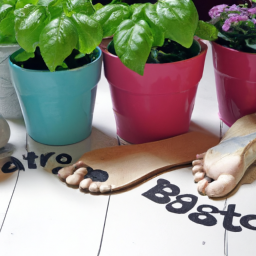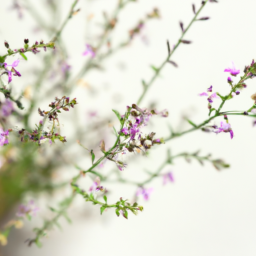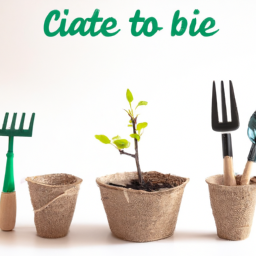
Benefits of Eco-Friendly Indoor Gardening: Sustainable Practices for Greener Living
Introduction
Eco-friendly indoor gardening is not only a rewarding hobby but also a sustainable practice that promotes greener living. With the increasing awareness of environmental issues, more and more people are turning to indoor gardening as a way to contribute to a healthier planet. This article aims to explore the numerous benefits of eco-friendly indoor gardening and provide a step-by-step guide on how to implement sustainable practices for greener living.
Improved Air Quality
One of the significant benefits of eco-friendly indoor gardening is the improvement of air quality within your home. Plants act as natural air purifiers, absorbing carbon dioxide and releasing oxygen through the process of photosynthesis. They also remove harmful toxins and pollutants from the air, such as formaldehyde and benzene, which are commonly found in household items like furniture, carpets, and cleaning products.
By incorporating indoor plants into your living space, you can significantly reduce indoor air pollution and create a healthier environment for you and your family. Some plants, such as the snake plant, peace lily, and spider plant, are particularly effective in purifying the air and are easy to care for, making them ideal choices for indoor gardening.
Furthermore, the presence of plants indoors can also increase humidity levels, which is beneficial, especially during dry winter months when indoor air tends to be drier due to heating systems. This can help alleviate respiratory problems and reduce the risk of dry skin and allergies.
Stress Reduction and Mental Well-being
Indoor gardening has been proven to have a positive impact on mental well-being and can help reduce stress levels. The act of nurturing and caring for plants can be therapeutic and provide a sense of purpose and accomplishment. Research has shown that being around plants can lower blood pressure, reduce anxiety, and improve overall mood.
Creating an indoor garden allows you to connect with nature, even if you live in an urban environment with limited access to outdoor green spaces. The presence of plants and the natural beauty they bring can create a calming and tranquil atmosphere in your home, promoting relaxation and a sense of serenity.
In addition, indoor gardening can also be a creative outlet, allowing you to express yourself through plant selection, arrangement, and design. The process of planning and tending to your indoor garden can be a form of mindfulness, helping you focus on the present moment and find solace in the beauty of nature.
Food Security and Sustainable Living
Another significant benefit of eco-friendly indoor gardening is the ability to grow your own food, promoting food security and sustainable living. By cultivating edible plants indoors, you can have a fresh and constant supply of organic produce right at your fingertips, regardless of the season or geographical location.
Indoor gardening allows you to have control over the growing conditions, ensuring that no harmful pesticides or chemicals are used. This not only benefits your health but also contributes to a more sustainable food system by reducing the reliance on industrial agriculture and its negative environmental impacts.
Furthermore, indoor gardening can help reduce food waste as you can harvest only what you need, minimizing spoilage. It also eliminates the need for transportation and packaging associated with store-bought produce, reducing carbon emissions and promoting a greener lifestyle.
Conclusion
Eco-friendly indoor gardening offers a multitude of benefits, ranging from improved air quality and stress reduction to food security and sustainable living. By incorporating indoor plants into your living space and adopting sustainable practices, you can contribute to a greener environment while enjoying the many rewards of indoor gardening. Start by selecting the right plants for your space, providing them with proper care and maintenance, and watch as your indoor garden flourishes, bringing beauty, tranquility, and a sense of fulfillment to your life.
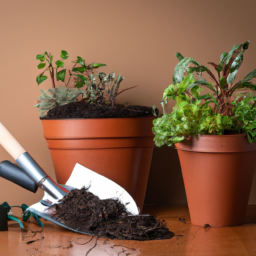
Essential Tools and Supplies for Eco-Friendly Indoor Gardening: Sustainable Practices for Greener Living
Introduction
Indoor gardening is a wonderful way to bring nature into your home while also contributing to a greener and more sustainable lifestyle. Whether you have limited outdoor space or simply want to enjoy the benefits of gardening year-round, eco-friendly indoor gardening allows you to grow plants in an environmentally conscious manner. To ensure successful and sustainable indoor gardening, it is essential to have the right tools and supplies. In this article, we will explore the must-have items for eco-friendly indoor gardening and provide you with a step-by-step guide to greener living.
1. Organic Seeds and Seedlings
When starting your indoor garden, it is crucial to choose organic seeds and seedlings. Organic seeds are free from genetically modified organisms (GMOs) and synthetic chemicals, ensuring a more sustainable and natural growing process. Look for certified organic seeds and seedlings from reputable suppliers or consider saving seeds from your own organic produce. By using organic seeds, you are not only promoting greener living but also supporting biodiversity and preserving heirloom plant varieties.
Before planting your seeds or seedlings, make sure to research the specific requirements of each plant. Some plants may require special soil conditions, lighting, or temperature, so it is important to provide the optimal environment for their growth.
Additionally, consider choosing open-pollinated or heirloom varieties of plants. These plants have not been crossbred or genetically modified, making them more resilient and better suited for indoor gardening.
2. Sustainable Potting Mix
A sustainable potting mix is the foundation for healthy plant growth in indoor gardening. Avoid using traditional potting mixes that contain synthetic fertilizers and peat moss, as these can have negative environmental impacts. Instead, opt for organic potting mixes that are made from renewable resources such as coconut coir, compost, or vermiculite.
These sustainable potting mixes provide essential nutrients to your plants while also retaining moisture and promoting proper drainage. They are also free from harmful chemicals, ensuring a safe and eco-friendly environment for your indoor garden.
Remember to choose a potting mix that is suitable for the specific needs of your plants. Some plants may require well-draining soil, while others prefer a more moisture-retentive mix. Understanding the preferences of your plants will help you select the right potting mix for optimal growth.
3. Efficient Watering Tools
Water is a precious resource, and using it efficiently is crucial for eco-friendly indoor gardening. Invest in watering tools that promote water conservation and minimize wastage. One such tool is a watering can with a narrow spout, which allows for precise watering without excessive runoff.
Consider using a self-watering system or drip irrigation for larger indoor gardens. These systems deliver water directly to the plant roots, reducing water loss through evaporation and ensuring that plants receive the right amount of moisture.
To further conserve water, collect and reuse rainwater or use filtered water from sustainable sources. Avoid using chlorinated tap water, as it can be harmful to both your plants and the environment.
4. Energy-Efficient Grow Lights
Proper lighting is essential for the success of your indoor garden, especially if you don’t have access to sufficient natural light. Choose energy-efficient grow lights that mimic the spectrum of natural sunlight, such as LED or fluorescent lights.
LED grow lights are particularly sustainable as they consume less energy and have a longer lifespan compared to traditional light bulbs. They also produce less heat, reducing the risk of plant damage and saving on cooling costs.
When positioning your grow lights, ensure that they are placed at the appropriate distance from your plants to prevent burning or stunted growth. Follow the manufacturer’s instructions for optimal usage and energy efficiency.
Conclusion
Eco-friendly indoor gardening is an excellent way to embrace sustainable practices and enjoy the benefits of nature within the confines of your home. By using organic seeds and seedlings, sustainable potting mixes, efficient watering tools, and energy-efficient grow lights, you can create a greener and more sustainable indoor garden. Remember to choose plants that are suitable for indoor environments and provide them with the necessary care and attention. With these essential tools and supplies, you’ll be on your way to a successful and eco-friendly indoor garden that brings joy, beauty, and sustainability to your living space.
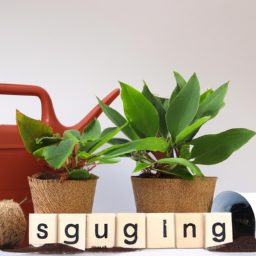
Choosing the Right Plants for Eco-Friendly Indoor Gardening: Sustainable Practices for Greener Living
Indoor gardening is a wonderful way to bring nature into your home and create a greener living space. Not only does it add beauty to your surroundings, but it also promotes a healthier environment by improving air quality and reducing stress. When it comes to eco-friendly indoor gardening, choosing the right plants is crucial. In this guide, we will explore sustainable practices and provide you with a step-by-step approach to selecting the perfect plants for your indoor garden.
Understanding Sustainable Indoor Gardening
Before diving into plant selection, it’s essential to understand the concept of sustainable indoor gardening. This practice focuses on creating a harmonious and balanced ecosystem within your home. It involves using organic materials, conserving resources, and minimizing waste. By adopting sustainable practices, you can reduce your carbon footprint and contribute to a greener planet.
When it comes to indoor gardening, sustainability starts with the choice of plants. Opting for native or low-maintenance plants that thrive well indoors not only reduces water consumption but also eliminates the need for harmful pesticides and fertilizers. These plants are more resilient and require less maintenance, making them ideal for eco-friendly indoor gardening.
Now, let’s explore the step-by-step process of choosing the right plants for your eco-friendly indoor garden.
Step 1: Assess Your Indoor Environment
The first step in selecting the right plants is to assess your indoor environment. Factors such as light exposure, temperature, and humidity levels play a crucial role in determining which plants will thrive in your space. Observe the different areas of your home to identify the microclimates that exist. Some areas may receive direct sunlight, while others may be shaded throughout the day. This assessment will help you understand the conditions you can offer to potential plants.
Consider the following aspects:
- Light Exposure: Determine the amount of natural light your indoor space receives. This will help you choose plants that require low, medium, or high light conditions.
- Temperature: Note the average temperature in your home. Some plants prefer cooler environments, while others thrive in warmer temperatures.
- Humidity: Assess the humidity levels in your home. Some plants, such as tropical varieties, require higher humidity levels to thrive.
By understanding your indoor environment, you can narrow down your plant choices and ensure their successful growth.
Step 2: Research Suitable Plant Varieties
Once you have assessed your indoor environment, it’s time to research suitable plant varieties. Look for plants that are known to thrive indoors and require minimal care. Native plants are an excellent choice as they are adapted to the local climate and often require less water and maintenance.
Consider the following factors when researching plant varieties:
- Light Requirements: Choose plants that match the light conditions in your home. Some popular low-light indoor plants include snake plants, pothos, and ZZ plants. For brighter spaces, consider succulents, cacti, or herbs like basil and rosemary.
- Watering Needs: Opt for plants that don’t require frequent watering. Succulents and cacti, for example, store water in their leaves and can withstand longer periods between watering.
- Air Purification: Certain plants, such as spider plants, peace lilies, and aloe vera, are known for their air-purifying properties. These plants can help improve indoor air quality by removing toxins.
Make a list of plant varieties that align with your indoor environment and sustainable goals.
Step 3: Consider Potting and Soil Options
When it comes to eco-friendly indoor gardening, choosing the right pots and soil is equally important. Opt for sustainable potting materials such as terracotta, ceramic, or recycled plastic. These materials are durable, non-toxic, and can be reused or recycled.
For soil, consider using organic potting mixes or create your own by combining compost, peat moss, and perlite. Avoid using soil from your garden, as it may contain pests or diseases that can harm your indoor plants.
Ensure the pots have proper drainage holes to prevent waterlogging and root rot. Use saucers or trays to collect excess water and avoid wasting it. This way, you can reuse the water for other plants or household purposes.
By choosing sustainable potting materials and soil, you contribute to the overall eco-friendliness of your indoor garden.
In conclusion, eco-friendly indoor gardening is all about making conscious choices that promote sustainability. By assessing your indoor environment, researching suitable plant varieties, and considering potting and soil options, you can create a greener living space that thrives with minimal impact on the environment. Embrace the beauty of indoor plants while contributing to a more sustainable future.
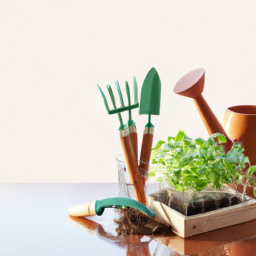
Tips for Water Conservation in Eco-Friendly Indoor Gardening
Introduction
Welcome to the world of eco-friendly indoor gardening! In this guide, we will explore sustainable practices for greener living specifically focusing on water conservation. Indoor gardening not only adds beauty to your living space but also contributes to a healthier environment. By implementing these tips, you can ensure that your indoor garden thrives while minimizing water usage and promoting sustainable practices.
1. Choose the Right Plants
When it comes to water conservation, selecting the right plants for your indoor garden is crucial. Opt for plants that are naturally adapted to low water conditions. Succulents, cacti, and certain herbs like rosemary and thyme are excellent choices as they require minimal watering. These plants have evolved to store water in their leaves, stems, or roots, making them more resilient to drought conditions.
Additionally, consider native plants that are well-suited to your local climate. Native plants are adapted to the natural rainfall patterns of your region, reducing the need for excessive watering. Research the water requirements of different plant species before adding them to your indoor garden.
Furthermore, grouping plants with similar water needs together can help you create a more efficient watering routine. This way, you can avoid overwatering some plants while underwatering others.
2. Implement Proper Watering Techniques
Watering your indoor garden efficiently is essential for water conservation. Follow these tips to ensure you’re using water wisely:
A. Watering Frequency: Instead of watering on a fixed schedule, check the moisture level of the soil before watering. Stick your finger about an inch deep into the soil – if it feels dry, it’s time to water. Overwatering can lead to root rot and water wastage.
B. Watering Methods: Consider using a watering can with a narrow spout or a drip irrigation system to target the root zone directly. Avoid overhead watering as it can result in water loss due to evaporation and unnecessary wetting of foliage.
C. Collect and Reuse Water: Place a tray or saucer under your potted plants to catch excess water. This water can be reused for other plants, ensuring that no water goes to waste.
3. Improve Water Retention in Soil
Enhancing the water retention capacity of your indoor garden soil can significantly reduce water usage. Here are a few methods to achieve this:
A. Mulching: Apply a layer of organic mulch, such as wood chips or compost, on the surface of the soil. Mulch helps retain moisture by reducing evaporation, regulating soil temperature, and suppressing weed growth.
B. Soil Amendments: Incorporate water-absorbing materials like vermiculite or coconut coir into your potting mix. These amendments increase the water-holding capacity of the soil, reducing the frequency of watering.
C. Self-Watering Systems: Consider using self-watering containers or hydroponic systems. These systems provide a reservoir of water that gradually feeds the plants’ roots, ensuring efficient water usage and preventing water runoff.
Conclusion
By following these tips for water conservation in eco-friendly indoor gardening, you can create a sustainable and greener living space. Remember to choose water-efficient plants, implement proper watering techniques, and improve soil water retention. Every small step towards water conservation contributes to a more eco-friendly lifestyle. Happy gardening!
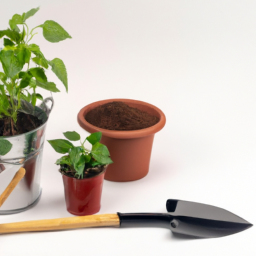
Creating a Natural Pest Control System for Eco-Friendly Indoor Gardening
Welcome to the world of eco-friendly indoor gardening! In this guide, we will explore sustainable practices that will help you create a greener living space. One crucial aspect of indoor gardening is pest control. Instead of relying on harmful chemicals, we will focus on natural pest control methods that are safe for both you and the environment.
Understanding the Importance of Natural Pest Control
Before diving into the specifics, let’s understand why natural pest control is essential for eco-friendly indoor gardening. Chemical pesticides not only harm pests but also pose risks to beneficial insects, pets, and even humans. Additionally, these chemicals can contaminate the soil and water, further damaging the environment.
Natural pest control, on the other hand, utilizes organic and sustainable methods to manage pests. By promoting a balanced ecosystem, you can keep pests at bay while maintaining a healthy environment for your plants to thrive.
Now, let’s explore some effective ways to create a natural pest control system for your indoor garden.
1. Identify and Monitor Pests
The first step in natural pest control is identifying and monitoring the pests in your indoor garden. Regularly inspect your plants for any signs of pest activity, such as holes in leaves, webbing, or discolored patches. By recognizing the pests early on, you can take appropriate measures to prevent their infestation.
Keep a close eye on common indoor garden pests like aphids, mealybugs, spider mites, and fungus gnats. Remember, prevention is key to maintaining a healthy garden.
2. Encourage Beneficial Insects
Introducing beneficial insects is an effective and natural way to control pests in your indoor garden. Ladybugs, lacewings, and predatory mites are examples of beneficial insects that feed on common pests. You can purchase these insects from local nurseries or online suppliers.
Another way to attract beneficial insects is by planting companion plants that provide them with food and shelter. For instance, marigolds, dill, and fennel attract ladybugs, while yarrow and daisies attract lacewings.
3. Use Natural Repellents
There are several natural repellents that can deter pests from infesting your indoor garden. Here are a few examples:
– Neem oil: Neem oil is derived from the neem tree and acts as a natural insecticide and fungicide. Dilute neem oil with water and spray it on your plants to control a wide range of pests.
– Garlic spray: Garlic has natural insect-repelling properties. Blend a few garlic cloves with water, strain the mixture, and spray it on your plants to repel pests.
– Diatomaceous earth: Diatomaceous earth is a natural powder made from fossilized algae. Sprinkle it around your plants to control crawling insects like ants and cockroaches. The powder damages the exoskeleton of pests, leading to their dehydration and eventual death.
4. Maintain Proper Hygiene
Good hygiene practices are crucial for preventing pest infestations in your indoor garden. Here are some tips:
– Remove dead leaves and plant debris regularly. These can serve as hiding places for pests.
– Keep your indoor garden clean and free from clutter.
– Avoid overwatering your plants, as excess moisture can attract pests like fungus gnats.
– Rotate your plants regularly to prevent pests from establishing permanent homes.
5. Implement Physical Barriers
Setting up physical barriers can be an effective way to prevent pests from reaching your indoor garden. Here are a few examples:
– Install fine mesh screens on windows and vents to prevent insects from entering your space.
– Use sticky traps to catch flying pests like fruit flies and whiteflies.
– Place copper tape around pots to deter slugs and snails.
By combining these natural pest control methods and maintaining a healthy indoor gardening environment, you can create a sustainable and eco-friendly space that thrives without harming the ecosystem.
Remember, it’s essential to understand the specific needs of your plants and the pests that may affect them. With a little patience and dedication, you can achieve a greener and healthier indoor garden using eco-friendly practices.
Frequently Asked Questions (FAQ)
1. What is eco-friendly indoor gardening?
Eco-friendly indoor gardening refers to the practice of growing plants indoors using sustainable methods that minimize harm to the environment. It involves using organic fertilizers, conserving water, reducing energy consumption, and promoting biodiversity.
2. Why should I consider eco-friendly indoor gardening?
Eco-friendly indoor gardening allows you to enjoy the benefits of gardening while minimizing your carbon footprint. It helps improve air quality, reduces waste, conserves resources, and promotes a healthier living environment.
3. What are some sustainable practices for eco-friendly indoor gardening?
Some sustainable practices for eco-friendly indoor gardening include using organic soil and fertilizers, recycling and repurposing materials, conserving water through efficient irrigation systems, using energy-efficient lighting, and choosing native or low-maintenance plants.
4. How can I choose eco-friendly pots and containers for indoor plants?
When selecting pots and containers for indoor plants, opt for those made from sustainable materials like terracotta, bamboo, or recycled plastic. Avoid containers made from materials that are harmful to the environment, such as PVC or non-recyclable plastics.
5. Are there eco-friendly alternatives to chemical pesticides for indoor gardening?
Yes, there are several eco-friendly alternatives to chemical pesticides for indoor gardening. These include using natural insect repellents like neem oil or vinegar, attracting beneficial insects like ladybugs or lacewings, and practicing proper plant care to prevent pest infestations.
6. How can I conserve water while indoor gardening?
You can conserve water while indoor gardening by using self-watering pots or systems that provide water directly to the plant roots, avoiding overwatering, collecting and reusing rainwater, and using water-efficient irrigation methods like drip irrigation.
7. Can I grow my own food using eco-friendly indoor gardening?
Absolutely! Eco-friendly indoor gardening is a great way to grow your own food. You can cultivate herbs, vegetables, and even fruits indoors using organic soil, natural fertilizers, and sustainable practices. It allows you to have fresh, pesticide-free produce right at your fingertips.
8. How can indoor gardening contribute to a greener living environment?
Indoor gardening contributes to a greener living environment by improving air quality, reducing carbon dioxide levels, and increasing oxygen production. It also promotes a connection with nature, reduces the need for transportation of produce, and encourages sustainable practices in your daily life.
9. Can I practice eco-friendly indoor gardening in small spaces?
Absolutely! Eco-friendly indoor gardening can be practiced in small spaces. You can utilize vertical gardening techniques, choose compact plant varieties, use hanging baskets or wall-mounted planters, and make the most of available sunlight or artificial lighting to create a sustainable indoor garden.
10. Are there any resources available for learning more about eco-friendly indoor gardening?
Yes, there are various resources available for learning more about eco-friendly indoor gardening. You can explore online gardening blogs, join forums or communities dedicated to sustainable gardening, read books on the subject, or attend workshops and classes offered by local gardening organizations.
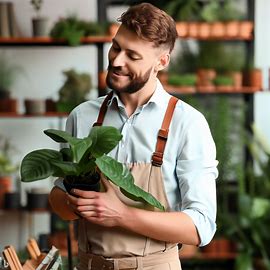
Alex Turner is a sustainable gardening advocate and the founder of an acclaimed indoor gardening blog. With a focus on eco-friendly practices and urban sustainability, Alex combines his background in environmental studies with his love for plants to educate readers on mindful indoor gardening. His work highlights the importance of nurturing both plants and the planet.

